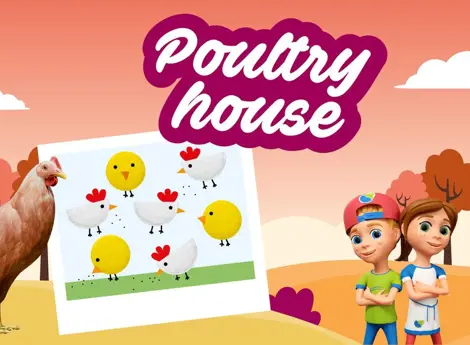From grain to egg
A chicken needs good food to live a healthy life and, of course, to lay eggs. But what exactly does a chicken eat? That depends on a number of things. How old is the chicken? Is it a chick or an adult? What kind of chicken is it, a broiler or a laying hen? In the case of a laying hen, the poultry farmer often chooses to feed the hen laying meal.

10 billion
More than 10 billion chicken eggs are laid for human consumption in the Netherlands every year. The number is so high that most of them are sold to other countries. The eggs that stay in the Netherlands are the kind we use to boil or fry our eggs for breakfast.
[Did you know that we eat about 200 eggs per person per year?]
Not all eggs end up in a carton in your fridge. Some eggs are used as ingredients in all kinds of products, such as biscuits, desserts and sweets. They’re also used in personal care products such as shampoo, creams and toothpaste.
Tour de force
Of course, those 10 billion eggs have to be laid first. This is what 32 million Dutch laying hens do every day, which is a tour de force. After all, a hen lays around 320 eggs a year.
To do this and stay healthy, a hen needs good food, such as grain. But grain alone is not enough. At De Heus, we mix the grain with other important nutrients so the hen stays in optimal shape and produces strong and nutritious eggs. The laying meal consists mainly of grains such as maize, wheat (barley and oats). But also seeds (proteins and fats) such as soya, sunflower seeds and rapeseed meal. Plus some oil and fat for energy and calcium for a strong egg shell.
Did you know that the colour of an egg yolk is determined by the type of food the hen eats?
Spring
In addition to the laying feed, which contains important nutrients, the farmer makes sure the hens are as comfortable as possible in the barn. He does this by providing good ventilation, lighting and clean drinking water. Like people, chickens need natural light; after a dark winter, they like to see the sun a little more often. The right combination of temperature and light ensures that it’s always spring in the house. And for hens, this is a great time to lay their eggs.
The egg box
When we shop, we can choose between different types of eggs. Barn eggs, free-range eggs and organic eggs. But what exactly is the difference? In the Netherlands, for example, you can tell the difference by the ‘Beter Leven’ ('Better Life') label. This is marked on the egg carton with stars. Barn eggs have 1 star. This means the hens have covered runs and enrichment materials. Free range eggs have 2 stars. Laying hens have the same conditions as free-range hens, but they can also go outside. Organic eggs have 3 stars. In addition to organic feed, there’s more space per laying hen, both indoors and outdoors.




